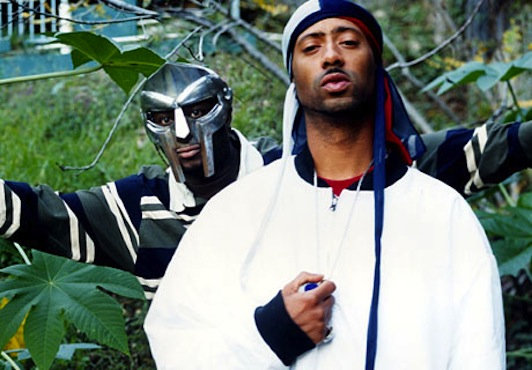

If you hold it up to TI and Nelly, the record is absolutely brilliant. The problem is, Madvillainy is only fresh when compared to the worst the genre has to offer. In a year (2004) when mediocre records by Beastie Boys and Kanye West were receiving Grammy nominations and rotten records by TI, Nelly and Jay-Z were selling like hotcakes, it's no surprise that Madvillain was almost universally regarded as a breath of fresh air. Madlib's production is interesting, and Doom's words (or MF DOOM's words, to be technically correct) flow well. In isolation, Madvillainy is a fairly unique and striking album. Sure, I'll occasionally hear some guys who blow me away, but mostly I hear the hip-hop equivalents to Boston and Smashing Pumpkins and White Stripes: artists who might have an original voice in isolation, but are lacking when compared to the greats within their genre. I don't love hip-hop enough to search for the rap equivalents to Jane's Addiction or Metallica, the artists who came long after the genre's peak and completely changed the music for the better. Sampling was still fair game, and young producers and DJs were experimenting with making their own sounds in the studio rather than relying on what other people had made. It was a time when aggression, violence, dissent, revolution, love, lust, drugs, intelligence, stupidity, pride, hope, and humor all shared the stage in an uneasy but creative peace. The music was sophisticated enough that the novelty had worn off, but young enough to freely embrace new ideas. Hip-hop reached its creative peak somewhere in the late '80s and early '90s.

Duke Ellington and Charlie Parker certainly pre-dated the peak of jazz by several decades, and Jane's Addiction and Metallica arrived long after rock's brightest lights had either burned out or faded away. That's not to say that no great artists existed outside these periods of greatness. Folk had the period between Joseph McCarthy and Lyndon Johnson, punk had the years between the formation and the dissolution of The Clash, and reggae had the creative explosion in the '70s that resulted in everything from dub to dancehall (and some dude named Bob Marley). In rock, it was from '66 to about '73, when bands as diverse as The Beatles, Led Zeppelin, Black Sabbath, and Pink Floyd created previously unimagined sounds that would be emulated and regurgitated for the next four decades. In jazz, it happened between the late '50s and the late '60s, when Mingus and Monk and Miles and Coleman and Coltrane broke the rules faster than they could make them up. Each genre of music has a period of greatness, a time when every unique aspect of the style's past, present, and future melds together in an almost magical way.


 0 kommentar(er)
0 kommentar(er)
